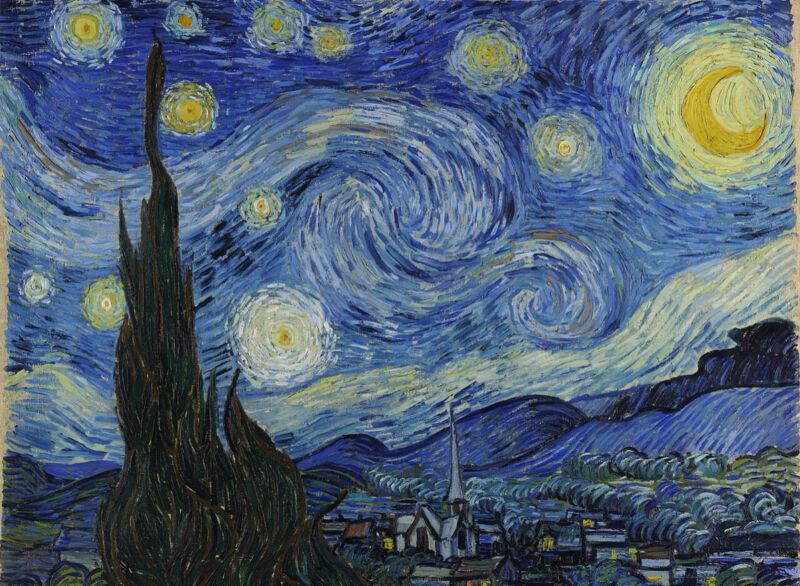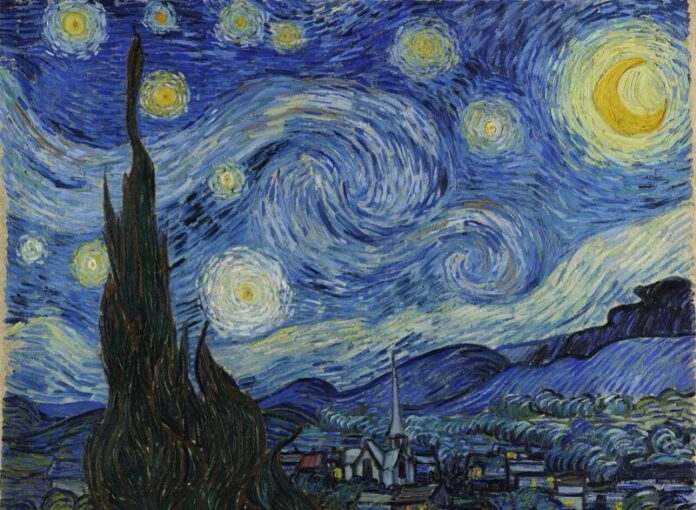
Enlarge / Many have seen a reflection of Vincent van Gogh's inner turmoil in the swirling vortices of The Starry Night. (credit: Public doman)
Vincent van Gogh's most famous painting is The Starry Night (1889), created (along with several other masterpieces) during the artist's stay at an asylum in Arles following his breakdown in December 1888. Where some have seen the swirling vortices of the night sky depicted in Starry Night as a reflection of van Gogh's own inner turmoil, physicists often see a masterful depiction of atmospheric turbulence. According to a new paper published in the journal Physics of Fluids, the illusion of movement in van Gogh's blue sky is also due to the scale of the paint strokes—a second kind of "hidden turbulence" at the microscale that diffuses throughout the entire canvas.
“It reveals a deep and intuitive understanding of natural phenomena,” said co-author Yongxiang Huang of Xiamen University in China. “Van Gogh’s precise representation of turbulence might be from studying the movement of clouds and the atmosphere or an innate sense of how to capture the dynamism of the sky.”
As previously reported, in a 2014 TED-Ed talk, Natalya St. Clair, a research associate at the Concord Consortium and coauthor of The Art of Mental Calculation, used Starry Night to illuminate the concept of turbulence in a flowing fluid. In particular, she talked about how van Gogh's technique allowed him (and other Impressionist painters) to represent the movement of light across water or in the twinkling of stars. We see this as a kind of shimmering effect, because the eye is more sensitive to changes in the intensity of light (a property called luminance) than to changes in color.
Read 7 remaining paragraphs | Comments
Ars Technica - All contentContinue reading/original-link]




